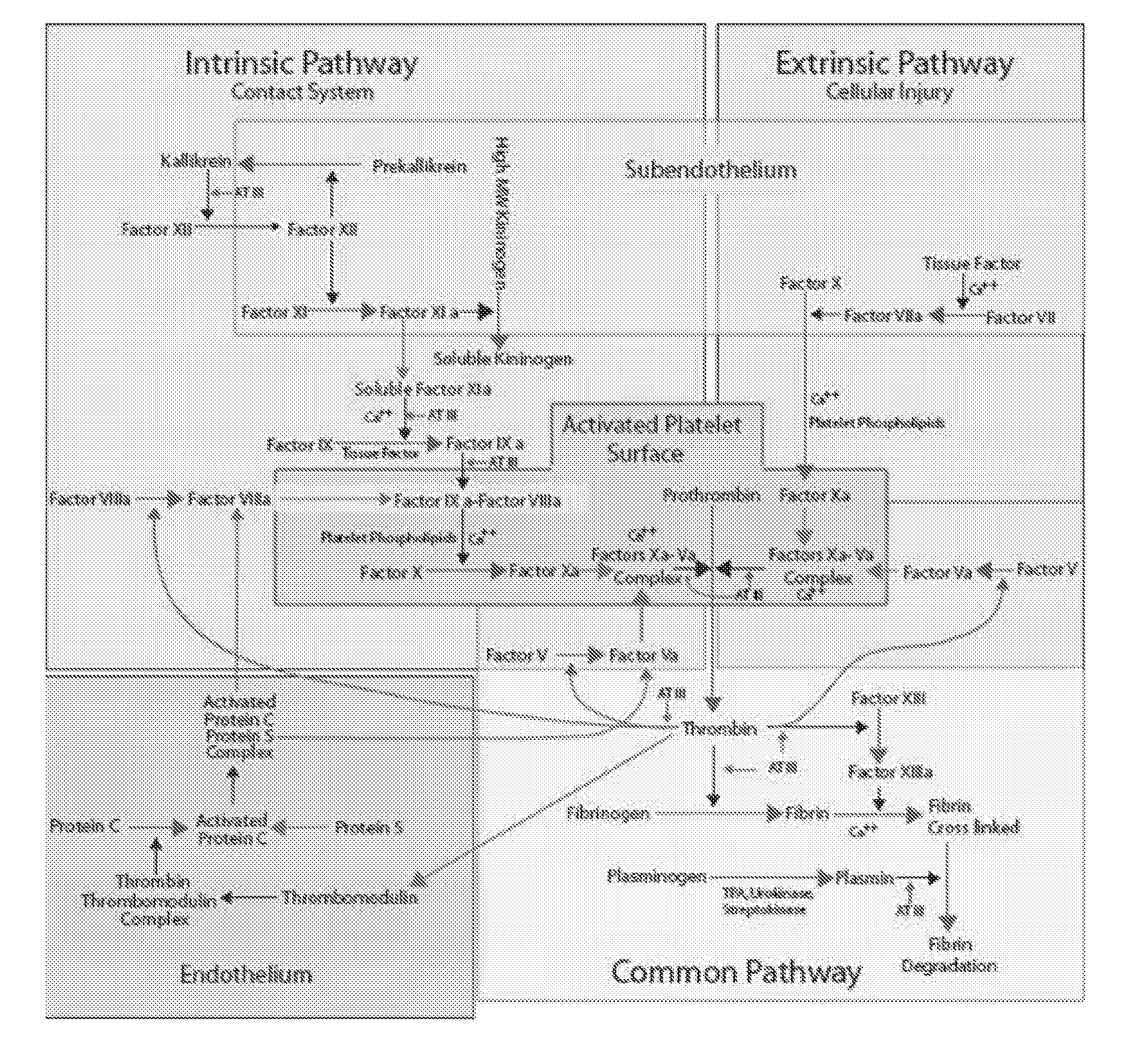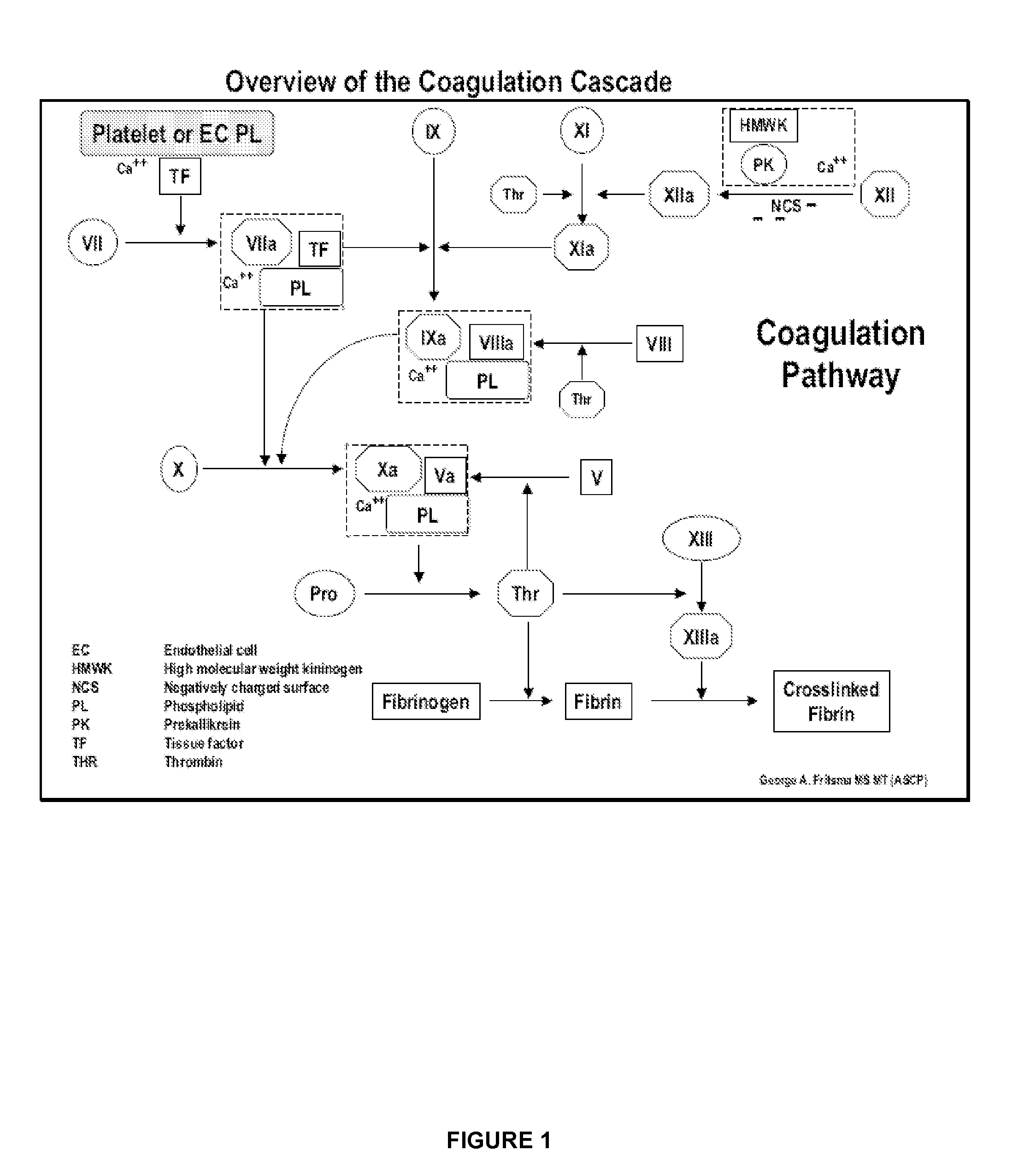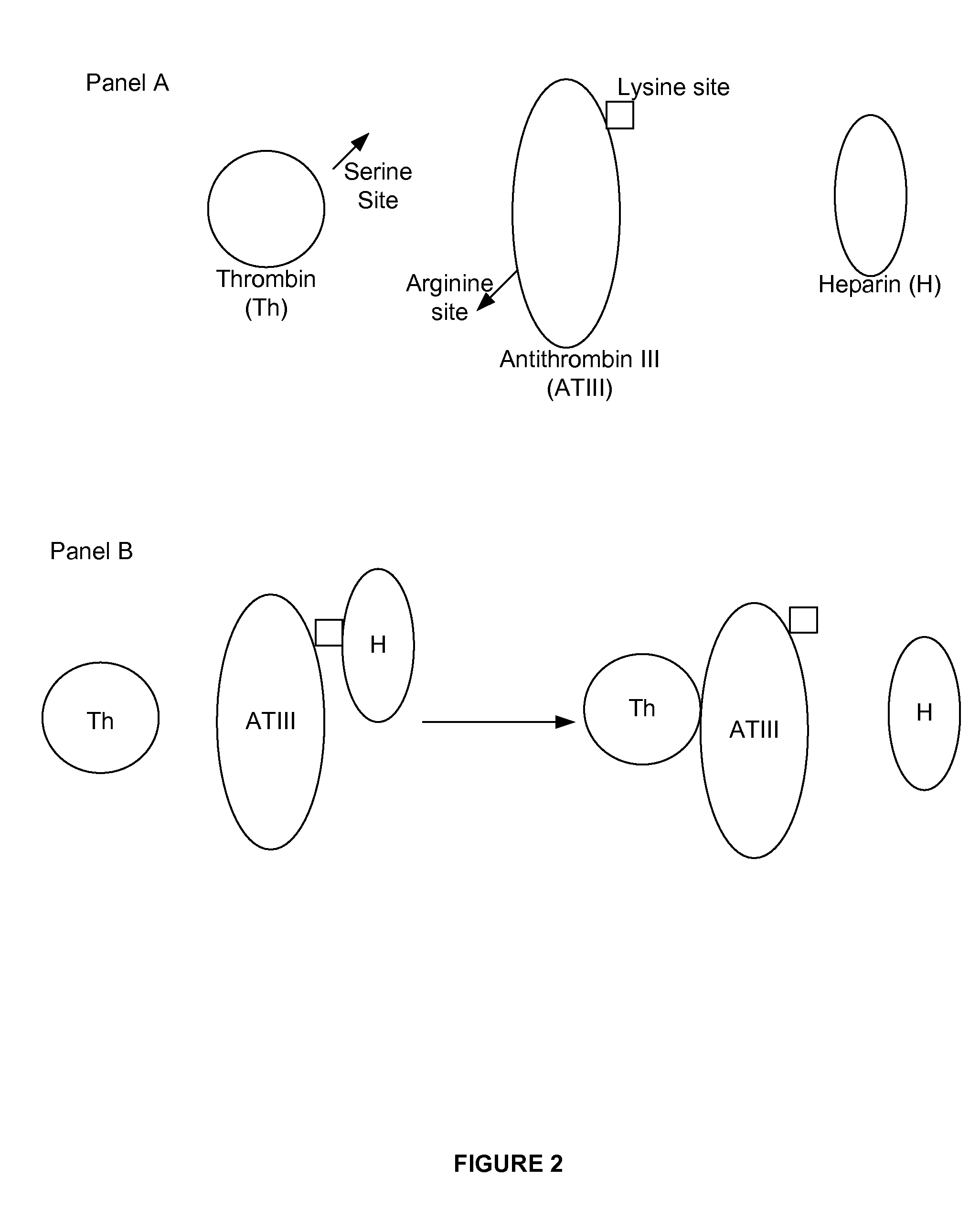Comprehensive modeling of the highly networked coagulation-fibrinolysis-inflammatory-immune system
a coagulation-inflammatory and immune-mediated system technology, applied in the field of agent-based modeling of the coagulation-inflammatory/immune-fibrinolysis system, can solve the problems of unaddressed effect of pharmaceutical modulation of one system inducing changes in the other, difficult and complex task,
- Summary
- Abstract
- Description
- Claims
- Application Information
AI Technical Summary
Benefits of technology
Problems solved by technology
Method used
Image
Examples
specific example 1
Computational Model of Coagulation, Inflammation, and Fibrinolysis
[0108]The two ABMS in this example use a two dimensional particle system. The particle model was one in which particles were able to move about and interact on a discrete spatial grid. In this case, the particles of the system were the cells, reactants, enzymes, and products defined in entity Table 1, below.
TABLE 1EntityDescriptionXIFactor XI Activates XII and IXXIaActivated factor XIXIIFactor XII (Hagemon factor). Activates XI.XIIaActivated factor XIIXIIIFactor XIII. Crosslinks fibrin monomers to form mature clot.XIIIaActivated factor XIIIXIIIaIXIIIaEXIIIaIEIXFactor IX (Christmas factor) Activates X. Cofactor of VIII - Forms tenase complex(Q)IXaActivated factor IXVIIIFactor VIII. Co-factor of IX - Forms tenase complex (Q)VIIIaActivated factor VIIIVIIIaIVIIIaEVIIIaIEVIIFactor VII. Activates IX and X.f7aTFActivated factor VIIIIFactor II (prothrombin). Activates I, V, VII, XIIIIIaActivated factor IIIIaIIaEIIaIEXFactor X...
specific example 2
A Computational Model of In Vivo Trauma Induced Coagulopathy
[0131]The PULSE initiative identified prevention of diffuse coagulopathies to be a priority in resuscitation science. Trauma Induced Coagulation (TIC) is a significant complication of trauma involving the complex nonlinear interplay of the coagulation and inflammation system (CIS). Its complexity poses significant challenges for systematic clinical study. Since modeling using computational approaches may be valuable adjunct, a model of TIC using a 2-D Agent Based Model (ABM) was developed.
[0132]For this example, a 2-D particle system was developed in which particles move and interact on a discrete spatial grid composed of ‘cells’. The particles of the system were cells (endothelial, WBC, platelets), reactants, enzymes, and reaction products. The number of ‘cells’ used in the simulations was 1,000,000 with a coagulation factor density of 16%. The particles' actions were determined by a set of rules derived from coagulation k...
specific example 3
Computational Modeling of the Effect of Cardiac Arrest on the Coagulation System
[0136]The PULSE initiative identified prevention of diffuse coagulopathies to be a priority in resuscitation science. Coagulopathy is a potential significant complication of cardiac arrest that involves the complex nonlinear interplay of the coagulation and inflammation system (CIS). This complexity has made it difficult to study in an integrative fashion at the microvessel level in cardiac arrest. Accordingly, a 2-D Agent Based Model (ABM) was developed in order to better understand the CIS in cardiac arrest.
[0137]In this example, the ABM utilized a 2-D particle system. Particles move and interact on a discrete spatial grid. The particles of the system were the cells, reactants, enzymes, and reaction products. The system was designed to model a blood vessel in vivo. The grid was in the shape of a rectangle. The sides of the rectangle represent endothelial cells; particles were capable of interacting wit...
PUM
 Login to View More
Login to View More Abstract
Description
Claims
Application Information
 Login to View More
Login to View More - R&D
- Intellectual Property
- Life Sciences
- Materials
- Tech Scout
- Unparalleled Data Quality
- Higher Quality Content
- 60% Fewer Hallucinations
Browse by: Latest US Patents, China's latest patents, Technical Efficacy Thesaurus, Application Domain, Technology Topic, Popular Technical Reports.
© 2025 PatSnap. All rights reserved.Legal|Privacy policy|Modern Slavery Act Transparency Statement|Sitemap|About US| Contact US: help@patsnap.com



